NICK Jaffe loves a challenge. But the 41-year-old adventurer admits that when he was halfway across Bass Strait in an old, gaff-rigged open-cockpit couta boat, battling fatigue and wild weather during a solo journey from Victoria to southern Tasmania, he did have moments where he questioned his sanity and wondered why on earth he ever thought taking on such an ambitious challenge was a good idea.
Bass Strait is considered by even the most experienced sailors as a treacherous corridor of gale-force winds and high seas, which can be a challenge to navigate safely, in even the most modern, hi-tech vessels. Most would not consider such a journey solo, in an old wooden boat with limited shelter and equipment.
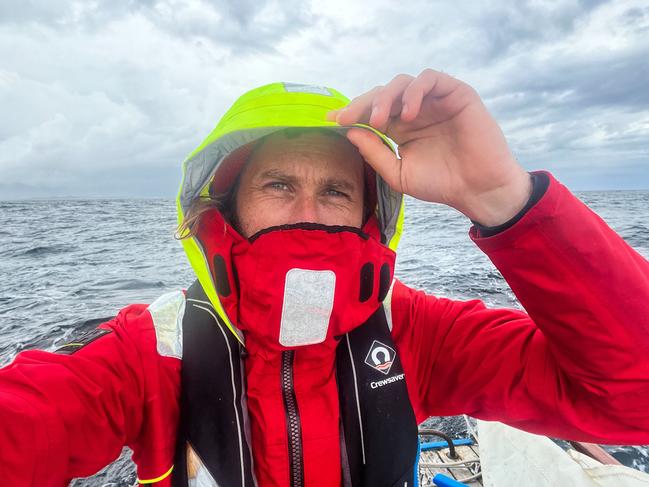
However, Jaffe says it wasn’t Huia – his 26-foot boat that was built in 1936 – that posed the biggest challenge on his recent 13-day journey. But rather it was his proximity to land, in the later stages of the trip, that he found most arduous.
“I found the Bass Strait crossing very challenging,’’ he explains.
“The conditions were what I expected, I knew what I was doing and I knew what was coming. But the stress of the long days … I didn’t expect to be so stressed about that, it was that relentless stress of coastal sailing as I was doing it on my own in such an old boat. The biggest danger for a boat is land, so when you’re in constant sight of land and you’re on your own, there’s no opportunity to rest.
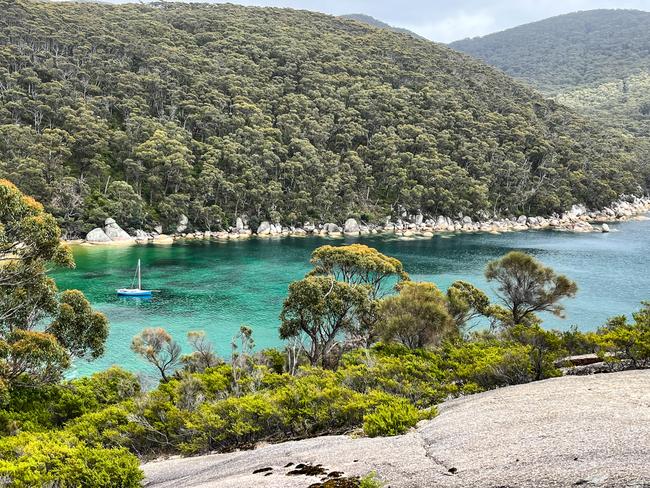
“I basically hand-steered most of the voyage – I had a small autopilot, which broke en route. One of the biggest days was 15 hours of hand steering. There were times when I thought ‘why I am I even out here?’.’’
But he says along with the challenges came many amazing moments – such as the stunning coastal scenery, the fascinating and hospitable locals he met during stopovers along the way, and the dolphins that accompanied him for part of the journey.
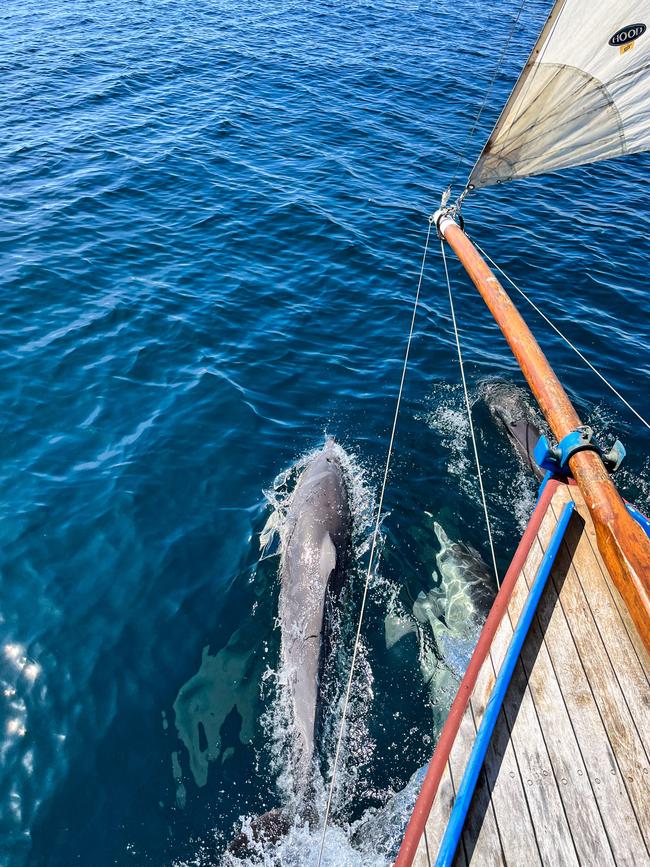
Jaffe did the trip in 13 days – he started at Geelong, sailed out of Port Phillip Bay and down the Victorian coast to Wilsons Promontory, and then into Refuge Cove to wait for better weather. He then sailed across to Deal Island, where he again sheltered from the weather, before sailing down past Flinders Island and Cape Barren Island, and down to mainland Tasmania before navigating the East Coast and arriving home to Eaglehawk Neck on the Tasman Peninsula.
Jaffe says there was something even more special about doing the journey in an 87-year-old wooden boat.
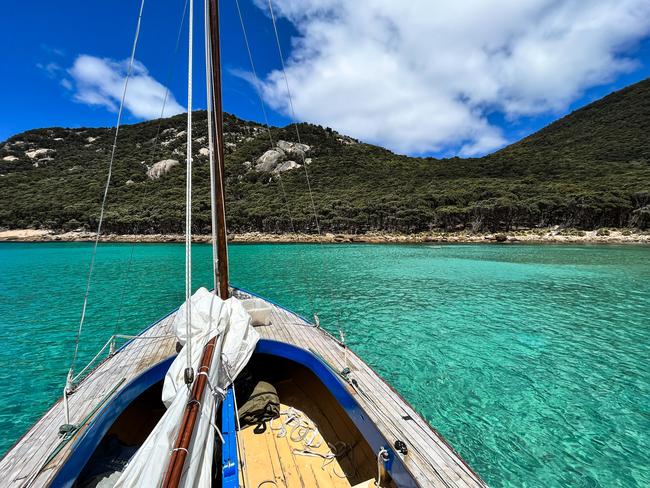
He says during the voyage on Huia he found himself “wondering about the salty men who built her, all long gone now … imagining them nailing on those planks, cigarettes hanging out of the corners of their mouths – how amazed they would be to know she’s still going strong, and on a great adventure!’’
Jaffe – who works as a freelance photographer, filmmaker, writer and craftsman – taught himself to sail while living overseas.
Between 2006 and 2009, he sailed across the Atlantic and Pacific oceans solo in a 26-foot boat, with his adventure the subject of a feature film called Between Home, made by German/Australian filmmaker Jack Rath.
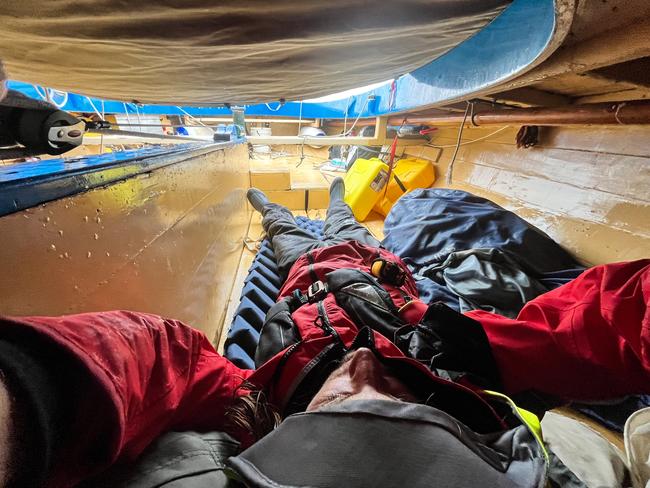
Jaffe also wrote a book about his adventures called The Years Thunder By. He has since embarked on a number of other sailing expeditions, sailing more than 35,000 nautical miles, mostly alone or shorthanded.
Jaffe also attempted an ambitious journey on land – in 2019 he bought a 30-year-old ex-Australian military Land Rover and prepared for a driving trip across the world, with the aim to drive from Cockle Creek in southern Tasmania to North Cape, Norway – Europe’s northernmost car-accessible point.
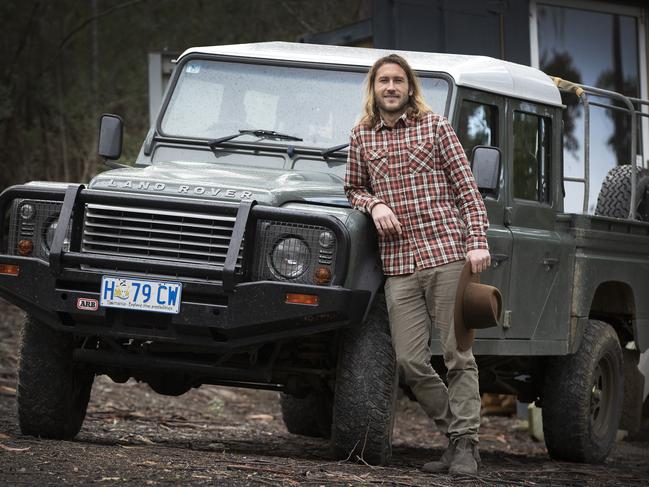
Jaffe made it as far as South Africa, but then the Coronavirus pandemic hit, and he had to abandon the mission and fly back to Tasmania, later shipping his car home.
But not one to be without an adventure on his mind, Jaffe then purchased Huia and started planning his Bass Strait crossing.
The recent trip was timed to ensure the boat would be in Hobart for the Australian Wooden Boat Festival, which runs from February 10-13.
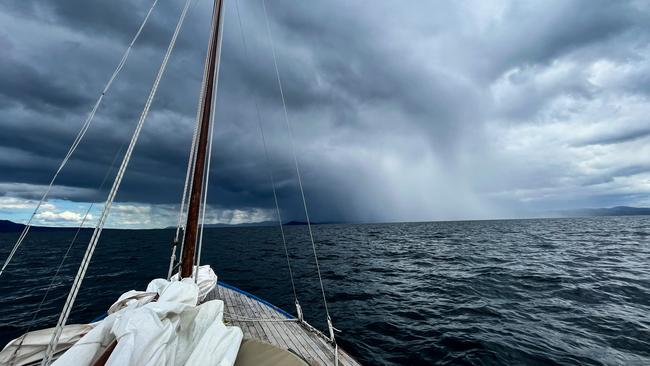
About 450 boats will converge on Hobart for the biennial event, with boaters keen to share their boats – and their wealth of sailing stories – with festivalgoers. Jaffe has visited the festival in the past, but this is the first time he’ll be part of the line-up and he says he’s excited to be sharing his story with other boating enthusiasts.
“Having Huia and the opportunity to be part of the festival was really exciting and I think I’ve found a new love in wooden boats,’’ he says.
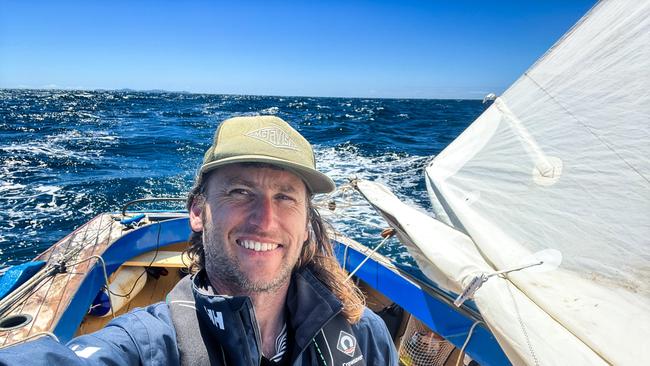
“I actually have another wooden boat now, sitting on our property.
“I’m hoping people will come down (to the festival) and sit on the boat and have a look at what it might be like to cross Bass Strait in a boat like that, it’s a pretty cool thing when I reflect on it.
“I’m looking forward to that, for sure.’’
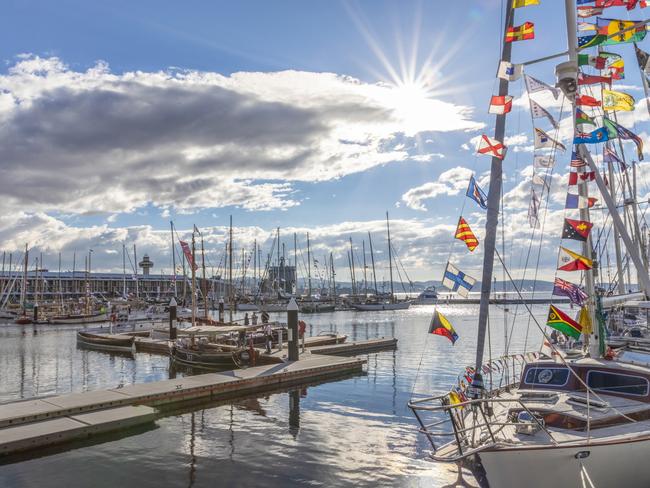
The Australian Wooden Boat Festival was first held in Hobart in 1994, inspired by other large boating festivals overseas.
Constitution Dock was taken over for one weekend in November for that first festival, and it was so popular that it continued to be held biennially in 1996 and 1998 before switching to a summer event in February 2001, to coincide with the Royal Hobart Regatta long weekend.
The Australian Wooden Boat Festival was a fenced, ticketed event for many years, but in 2011 it was decided to scrap fencing and make the hugely popular event free. And it was a move that paid off, with the event booming in the years since – it is now hailed as the largest boating festival in the southern hemisphere and one of the largest in the world.
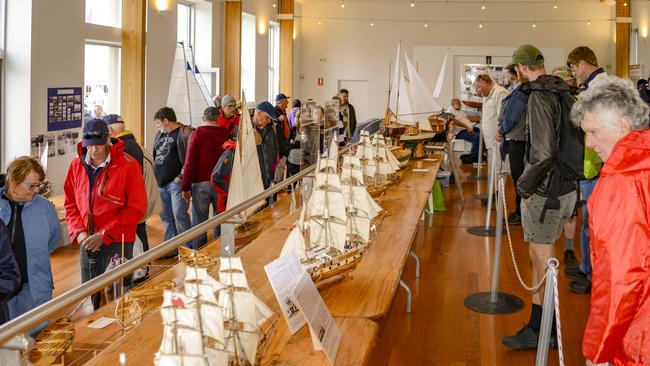
“Basically, we opened the floodgates,’’ festival general manager Paul Stephanus says.
“People just came from far and wide, and now we fill up every single nook of Sullivans Cove and Constitution Dock and close off the road all the way from Hunter St to PW1.’’
And with the 2021 festival cancelled due to Covid, Stephanus predicts this year’s event is going to be the biggest yet, with the free event featuring a lively combination of local food, live entertainment and music as well as boats.
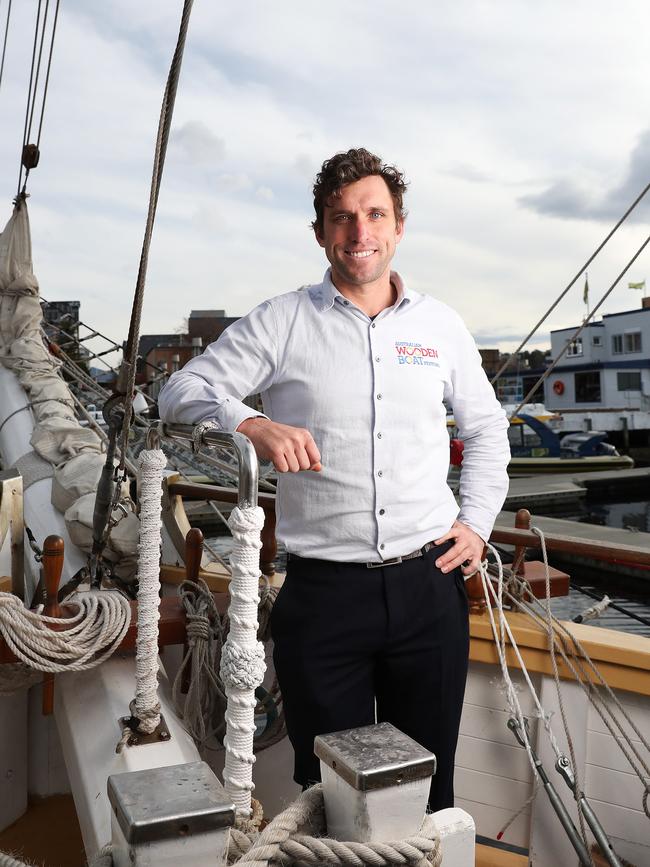
“It has been a four-year wait and people are champing at the bit,’’ he says.
“We’ve definitely increased the footprint of the festival … we’re expecting a massive influx in attendance … I do think it is going to be the biggest Australian Wooden Boat Festival yet.
“We’ve got a record number of tall ships – we’ve got 11 coming from four different states – and we’ve got 450 boats (300 on the water and 150 dinghies on shore).’’
Highlights will include a Parade of Sail at noon on the Friday, a massive display of dinghies at Hobart City Hall, a three-day symposium featuring numerous guest speakers, who will discuss a wide range of maritime-related topics, and the Quick and Dirty Boat Building Challenge, which gives enthusiastic school groups the chance to build and decorate their own wooden vessel during the festival, culminating in an entertaining race at Constitution Dock.
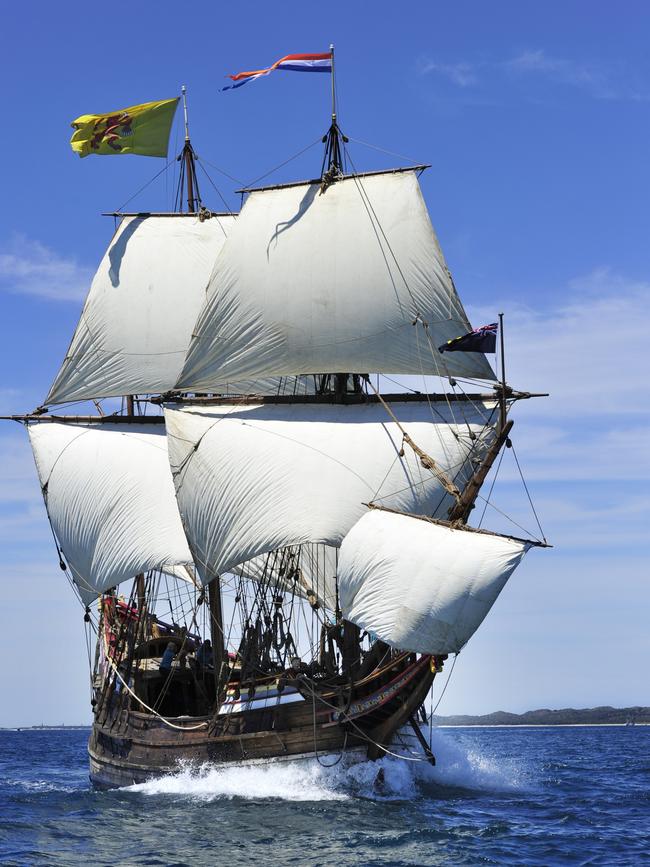
Other highlights include the Eat More Tassie Seafood marquee, featuring demonstrations and tastings from high-profile Tassie chefs, including Massimo Mele, Rodney Dunn, Sabina Newton and Eloise Emmett, an Indigenous Welcome to Country and the launch of a traditional Aboriginal watercraft built by palawa man Sheldon Thomas, as well as an expansive children’s area on Parliament Lawns.
This year’s festival will also focus heavily on showcasing Australian builders and designers and will also showcase the work of Tasmanian boat building organisations.
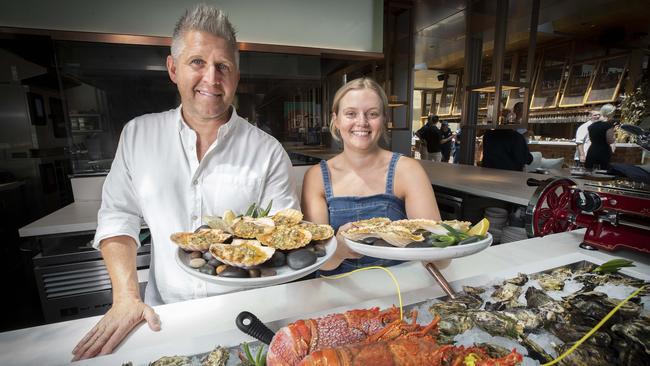
Stephanus says crowd numbers are measured on visitations – as one person may visit the festival multiple times during its four-day program of events – and visitation is expected to sit somewhere between 80,000-200,000 at this year’s event.
Stephanus expects about 80,000 individuals will make a combined total of 150,000 visits.
More than half the audience will hail from interstate or overseas, and Stephanus says the event has become a coveted pilgrimage among international boating enthusiasts, many of whom have previously visited other major boat festivals around the globe.
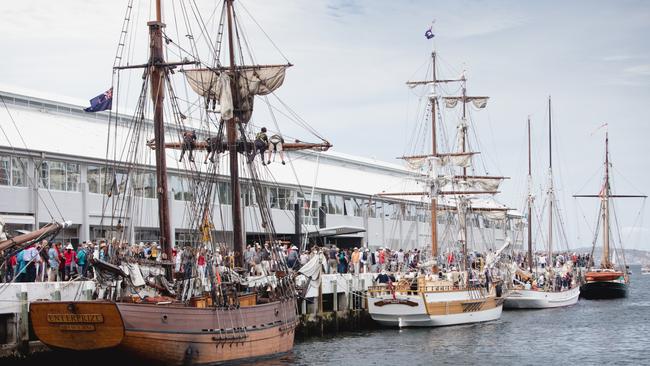
Stephanus believes the community focus of the event, which relies heavily on volunteers, is one of the things that makes it so popular with visitors.
“(The festival) has got a lot going for it – being free, in the height of summer, in a great location,’’ he says.
“And I think it’s also the community aspect of it, and bringing together a whole range of people with similar interests.’’
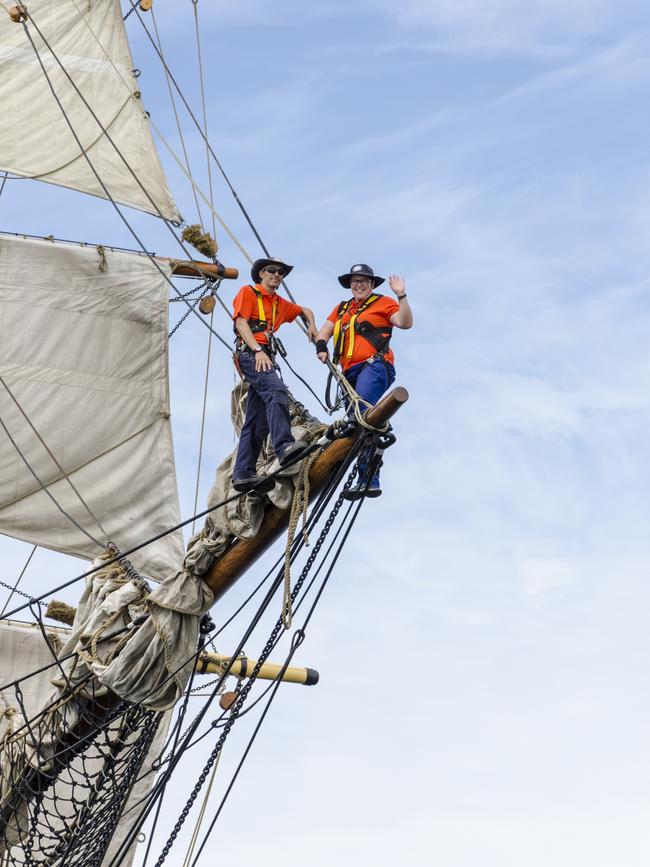
Stephanus says boats mean different things to different people – some flock to the festival to indulge their sense of adventure, others are more interested in the historical significance of wooden boats or the craftsmanship involved in building them.
“People just love wooden boats,’’ he says.
“There is something that is magnetising about them.
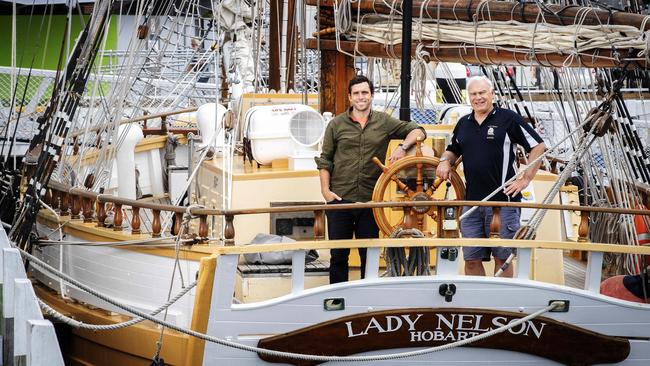
“But it’s also the people that own them. Owning a wooden boat is not a good economic proposition (a fibreglass boat would be bigger and faster and require far less money to be spent on it) … people pour lots of time and money and effort – and their life – into owning and maintaining wooden boats.
“And I think people are drawn to each individual’s energy and passion. We will have 450 wildly enthusiastic boat owners on site, willing to talk about boats and their energy and enthusiasm is infectious.’’
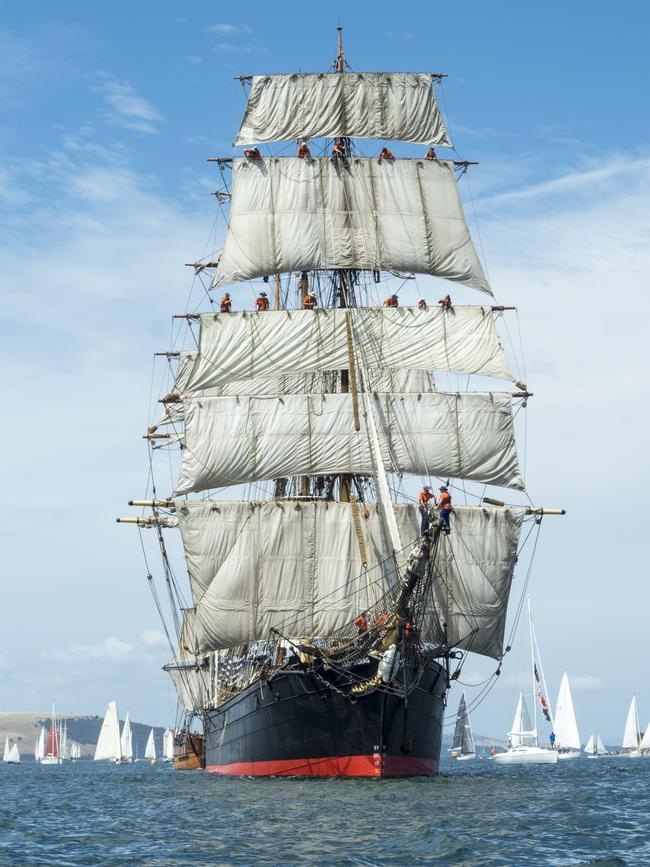
Visitors to this year’s Australian Wooden Boat Festival will also have an opportunity to learn traditional woodworking skills, with the help of woodworker Matt Holden and a team of other craftspeople running hands-on workshops at the Blundstone Noisy Boatyard.
Holden will hold demonstrations as well as “little tasting courses in woodworking” to give people an insight into traditional woodworking practices, while hopefully helping to uncover some hidden wood-turning talent.
A carpenter and joiner by trade, who has also taught outdoor education in the past, Holden has been teaching others to work with wood for the past five or six years since taking over the Wisdom Through Wood business, which he runs from a workshop on his property at Neika, in the foothills of Mt Wellington.
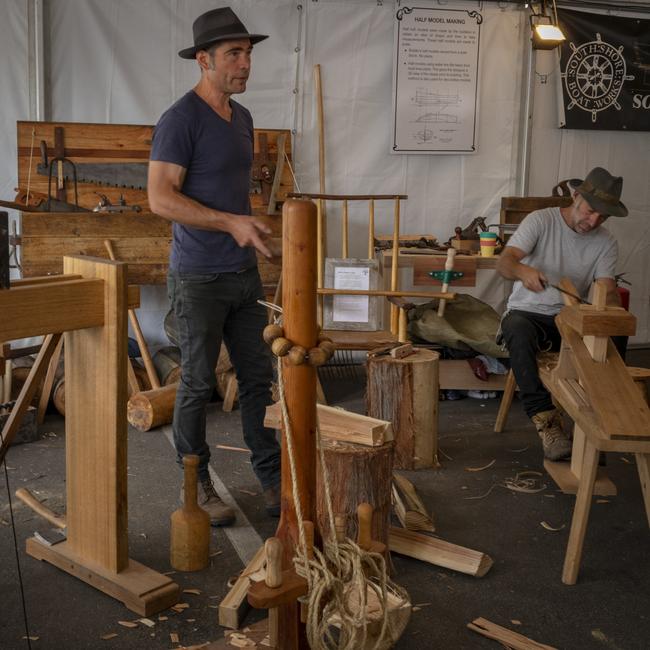
He has been showcasing woodworking at the Australian Wooden Boat Festival for a few years now and says it’s “a fantastic part” of his calendar, with the craft appealing to everyone from families with young kids through to retirees.
“I’m pretty hidden away in my workshop, so it’s nice to get out and show people what we do,’’ Holden explains.
“There’s often a lot of interest from people, who aren’t usually interested in woodworking. You hear so many stories, people saying ‘My grandfather had a workshop, and these are the sorts of tools he had in his workshop’ … it inspires people’s memories of things they’ve seen people doing in the past.’’
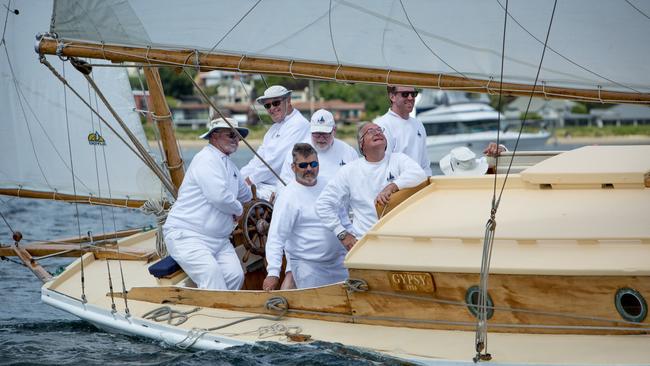
And he says with so many people working in offices or in front of screens, woodworking can provide a great respite from the digital age.
“I think there is a growing interest in traditional crafts,’’ he explains.
“And I suspect a part of that is for people to feel tangible results at the end of a day’s work, as a lot of people’s creativity is very virtual now.
“There’s a lot of aesthetic beauty in old tools and working in wood, which inspires a lot of our students to come along. And there’s that sense of creating something that is not off the shelf and isn’t factory made and the same as what everybody else has.
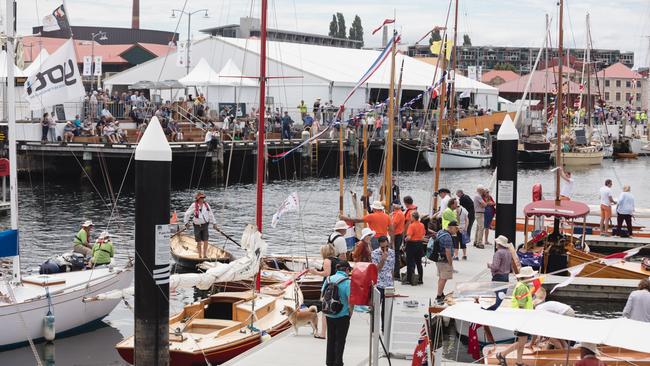
“Whether it’s a spoon or a bowl or a chair, every item that leaves the workshop is absolutely unique and the maker has embedded some part of themselves in that item and that’s a very rare experience.’’
During the Australian Wooden Boat Festival, the Noisy Boatyard will be buzzing with a series of ticketed half-day, full-day, and multi-day courses, with participants able to make and take home their own handcrafted maritime object.
Participants have the opportunity to work closely with skilled craftspeople, using specialist hand tools and can make items, including a wooden Japanese tray or a wooden handboard for bodysurfing.
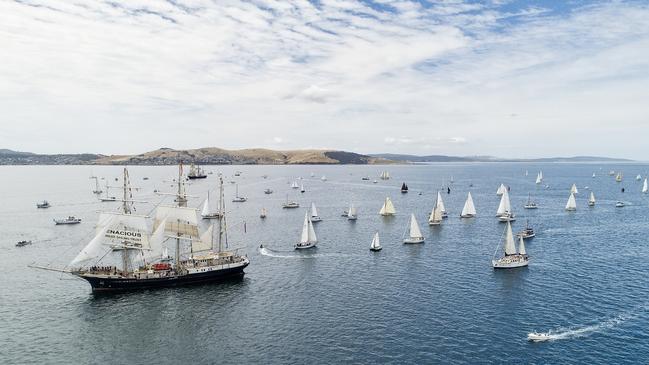
Although he doesn’t own a wooden boat himself, Holden confesses he’s “in love with old boats”. He says as a woodworker he certainly appreciates that the boats feature “beautiful” and “curvaceous” designs, while also having to provide “the ultimate in practicality”. He encourages Tasmanians, including those who might not usually be interested in boats, to come along and admire their beauty.
“The workmanship that goes into all those wooden boats is astonishing,’’ he says.
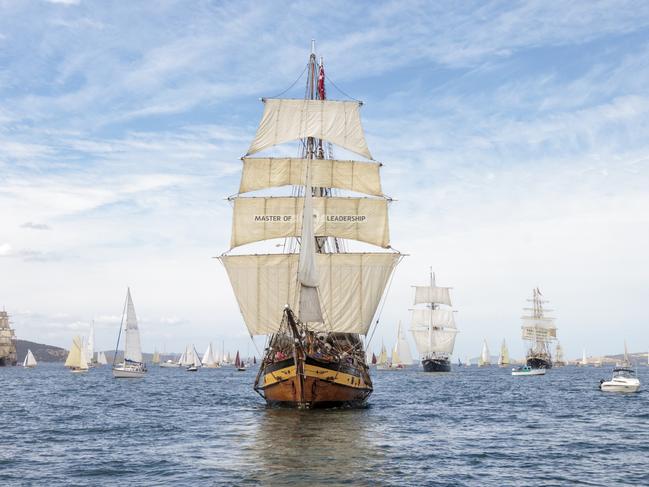
Roscoe Barnett is the dockmaster for the Australian Wooden Boat Festival, which means he and his team are responsible for berthing more than 300 boats across the entire waterfront in time for the festival to begin on Friday, February 10.
Boats are allowed to birth from midday on the Thursday, with staff in inflatable watercraft helping them manoeuvre safely into their allocated parking bays, based on the “fairly extensive map” Barnett has carefully perfected over many weeks.
He says it’s quite a logistic challenge to work out where exactly on Hobart’s Waterfront each boat will fit – he’s woken many times at 3am thinking about boats – with consideration given not only to the size of each boat, and whether they sail or operate under motor, but also which boat category they are best suited to for the festival.
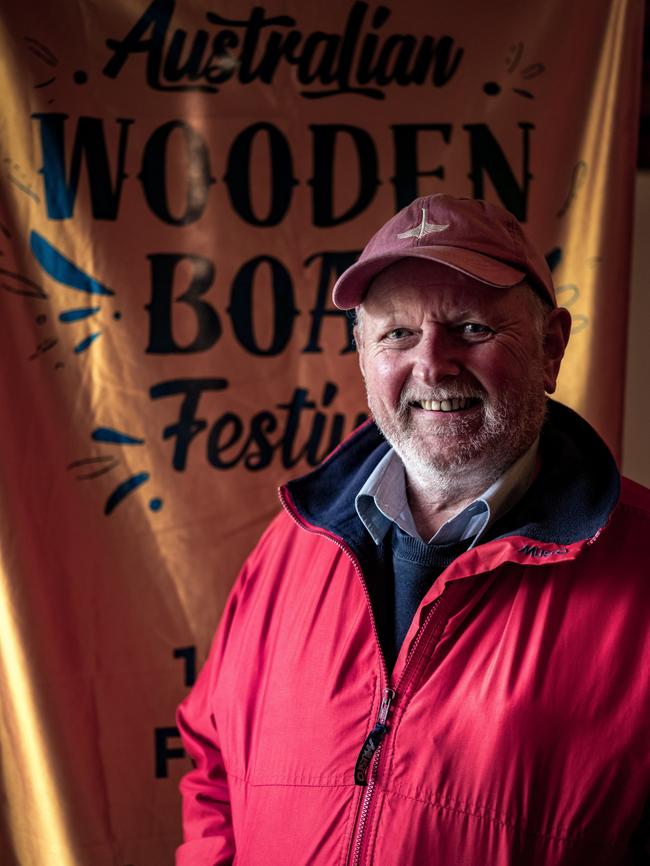
He’s also responsible for managing the waiting list for the event, to ensure if boats drop out due to sickness or mechanical problems or weather delays, that other boats can be quickly slotted into their place.
A record number of interstate boats registered to attend this year’s event, with 38 per cent of boats afloat applicants hailing from interstate. And a large number of those boats have never displayed at a festival before. However, due to capacity limitations, not all those who registered could be offered a berth, so boats on the waitlist are very keen for a last-minute call up if a position becomes available.
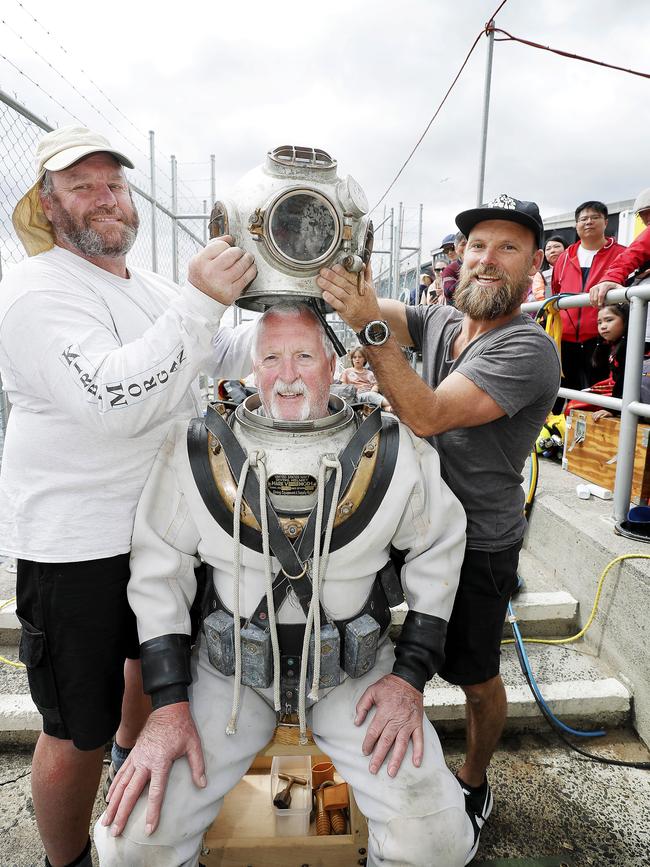
“We get 400-odd boats afloat that register to be part of the festival, but we have to cull that down to 300 because we can only fit 300 in, unfortunately,’’ Barnett says.
He jokes that when masses of boats arrive to berth at once it’s like “a supermarket carpark on a Friday afternoon’’.
But Barnett admits that it’s “a nice feeling” when all the boats are in their correct positions and ready for the long weekend of festivities.
“It’s nice to stand back and look at it all, it’s a great spectacle,’’ he says.
“And to see all the people going ‘ooh, ahh’– it’s just as nice to watch the punters come in and enjoy themselves.
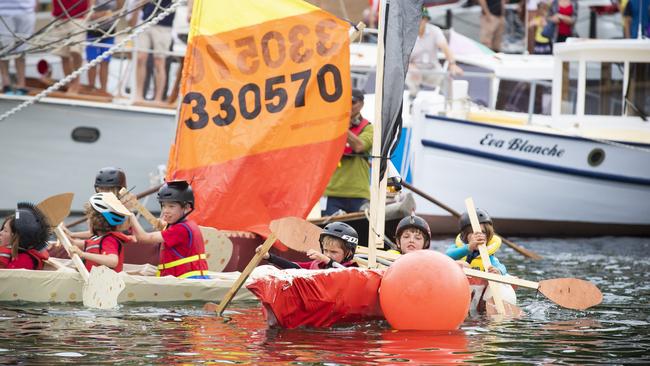
“It’s a lovely weekend on the waterfront. It’s family-friendly, you can bring the kids along, you can look at the boats and have an ice cream, there’s just a lot of happy people smiling.’’
The self-confessed “wooden boat tragic” lived in Sydney 20 years ago and began visiting Tasmania every two years to attend the Australian Wooden Boat Festival. “When it changed to February, it always falls on my birthday, so (attending the festival) was like a birthday present to me,’’ he explains.
He liked what he saw in Tasmania and eventually moved here. Soon after, he bumped into one of the festival founders, Cathy Hawkins, who was looking for new recruits for the festival’s committee.
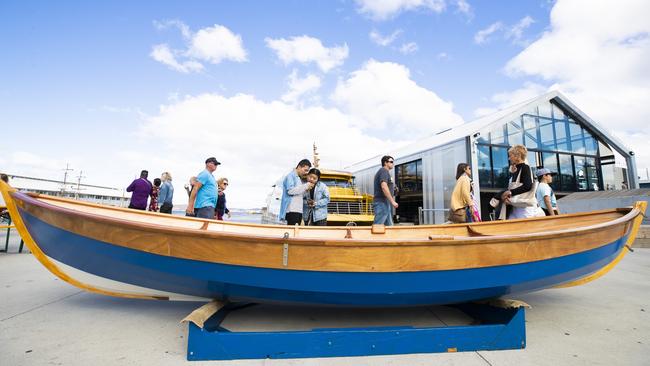
He joined the committee in 2005, with his first festival as an organiser and participant in 2007.
Barnett, 74, had planned to retire after the 2021 festival, but given that event didn’t go ahead due to Covid and the projects he was involved in carried over to the 2023 festival, he decided to stick around until this year.
“I’d like to go to a festival and sit in the cockpit of my boat and have a beer and talk to people and have a nice time, rather than run around like a maniac,’’ he laughs.
“I think this might be my last one (as an organiser).
“I do enjoy it. It’s a production, just like a stage show, you put all the things in place and pull the string and hope it all works.
“It’s exciting, but it’s also pretty nerve-racking.’’
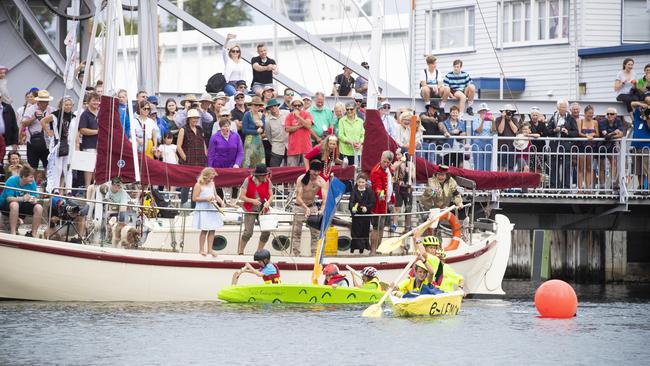
Barnett, who now lives at Tinderbox, grew up around boats and has owned various wooden boats over the years. He is known to many as the face behind chandlery business Roscoe’s Boat Bits, which he used to run at Battery Point.
At one stage he had a collection of eight clinker dinghies that he was planning to restore, but that collection has now been whittled down to three due to a lack of time.
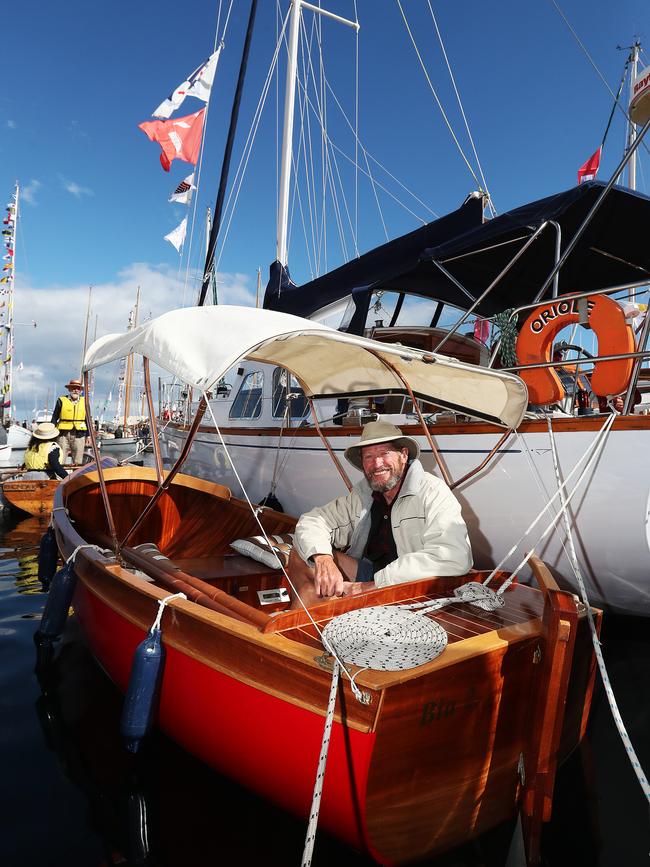
He says there’s just something magical about the craftsmanship of a wooden boat, and Tasmania – with its rich maritime history and wealth of timbers such as Huon pine and celery top pine – is the perfect place to build and showcase them.
“When I was a lot younger, young ladies appealed to me, but now wooden boats appeal to me, you change over the years,’’ he laughs.
“When you look at them being built, they are just little works of art.
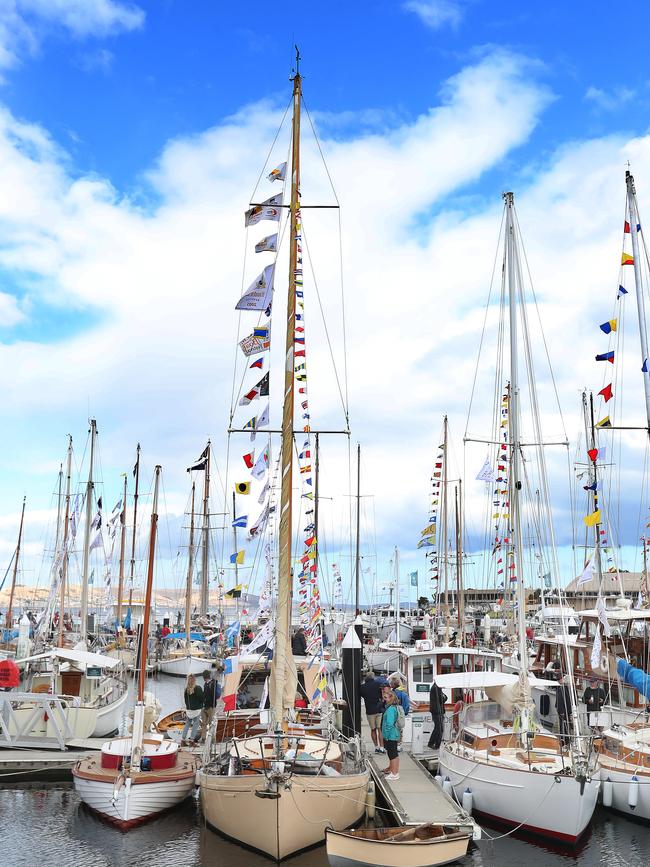
“Most wooden boats are pretty, but there’s also a lot of craftsmanship that goes into them, they don’t just happen overnight. It’s art and they are pieces of art.
“All the elements come together to make this wonderful thing that actually floats and performs well and lasts a long time.
“And we’ve got the best timber in the world for building boats.’’•
The Australian Wooden Boat Festival runs on Hobart’s Waterfront from February 10-13. Entry is free. australianwoodenboatfestival.com.au

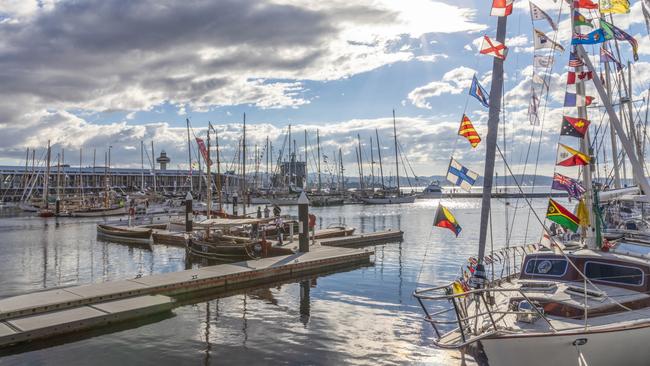
100 must-do Tassie experiences under $100
The cost of living continues to rise, but Tasmanians still want to get out and enjoy life, especially in winter. Find inspiration in our mega list of 100 distinctly Tasmanian things to do for under $100
New series shines light on muttonbirding, wild Bass Strait island
This powerful landmark series, set against the raw beauty of Great Dog Island, is a deeply personal reckoning with heritage, fatherhood and the fragile continuity of an Indigenous tradition